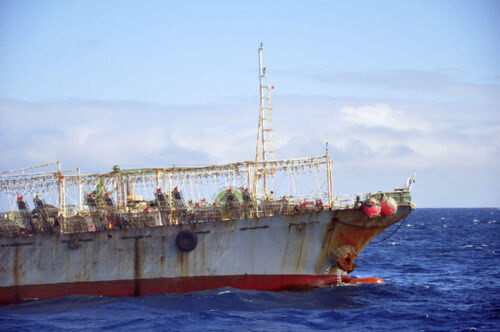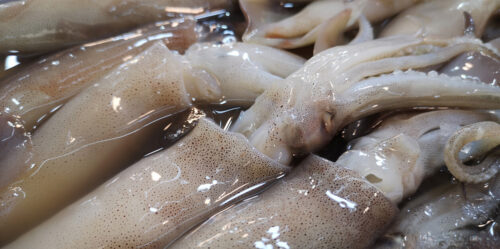The social, economic, and human toll of illegal fishing

Illegal fishing drains fish resources from the waters of both poor and rich countries. Over $23 billion US are lost every year to illegal fishing. It is estimated that one in every four fish we consume is caught illegally. The ocean is heavily impacted as fish stocks are exploited to the extent at which their recovery is seriously jeopardized. Socially, illegal fishing can have dire effects as well: illegal fishing by industrial vessels often outcompetes small-scale fishers in highly vulnerable areas traditionally reliant on fishing for their livelihoods and as a source of protein.
In West Africa, for example, IUU fishing takes away 300,000 jobs from coastal communities, and causes over $2 billion US in economic losses every year. Beyond its social, environmental, and economic footprint, illegal fishing in the form of incursions into areas that are closed to large-scale fishing results in increased conflict with small-scale operators, which often results in collisions at sea, and death. In West Africa alone, nearly 250 people die every year in such collisions, a heavy toll for communities reliant on fish for their survival. These incursions not only generate conflict and deaths, they also threaten the entire traditional fabric of fishing, which in turn can have severe long term repercussions on communities. As a researcher on African fisheries, I have repeatedly heard stories about the loss of loved ones at sea, sightings of vessels the size of football fields nearshore, and continuously dwindling fish stocks with these vessels pointed at as the primary cause of such a trend.
Other than anecdotal evidence, consistent information on incursion-related incidents is scarce and my study relied solely on government reporting and sanctioning of such cases. However, given that African countries lack proper monitoring systems and/or capacity, this information was barely available, or even reliable, as a good representation of the extent of the issue.
Identifying and assessing the extent of incursions
In a paper published recently in Fish and Fisheries, my team and I use automatic identification system (AIS) data derived from satellite technology and made available through Global Fishing Watch to overlap fishing operation tracks – a typical footprint of a vessel while fishing, with an area that was identified as being reserved strictly or at least partially to the small-scale fishing sector. Looking into 33 African countries around the continent, we found that 30 of these countries have designated areas specially for the exclusive or semi-exclusive use of their small-scale fishing sector, in an effort to protect fish nurseries, maintain the livelihood and food security of local communities, and reduce inter-sectoral conflicts between small-scale and large-scale, often foreign, sector. Among these countries, 24 had completely banned industrial fishing within a portion of their waters. These areas were called areas of complete restriction. We also identified areas of partial prohibition, where gear and flag restrictions existed in four countries.
The extent of the issue
Looking into satellite information and fishing tracks, or patterns identified by the Global Fishing Watch algorithm as fishing, any overlap with the areas of restriction was deemed to be an incursion. We analyzed over 4.2 million fishing hours within these countries spent by nearly 1,400 industrial vessels, 42% of which have fished in an inshore area of at least one African country.
We identified that vessels spent nearly 167,000 hours fishing within inshore zones subject to prohibition, which would translate into an average of nearly 70 fishing days annually per country. In reality, incursions were higher in more vulnerable countries, regardless of the level of the fishing effort. In Somalia for example, 94% of all industrial fishing effort (broadcasting AIS) was within the area strictly reserved to the small-scale sector. More intriguingly, we found that vessels flagged to African states, particularly those flagged to Ghana, spent the most time fishing in prohibited zones. The EU ranked third after South Korea, followed by vessels flagged to so-called “flag of convenience” countries, and then China with 2% of their fishing effort concentrated within prohibited zones.
Ending incursions by industrial vessels
There is no easy solution to curb illegal fishing, incursions in particular, in a context where monitoring, control, and surveillance is limited through the lack of human and financial resources. Incursions constitute 20% of all observed and sanctioned fisheries related offences in Africa according to Spyglass.fish. In turn, these 20% are linked to most deaths at sea, and increased competition over dwindling fish stocks, most of which are experiencing over-exploitation according to a recent study. If AIS is used along with considerations of political and legal contexts in the region, such as the compulsory use of AIS and its constant broadcasting, it can enable more targeted action, through monitoring, and effective mapping and surveillance of industrial activities. Technology and proper deployment of human capacity and intel could reveal key in curving illegal fishing.


